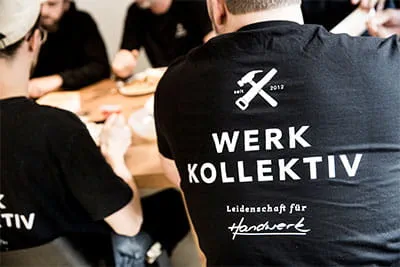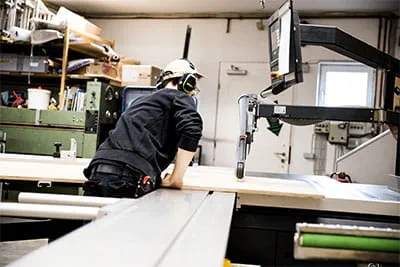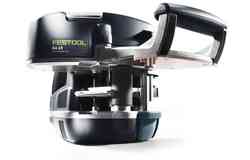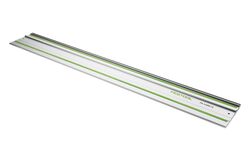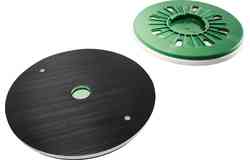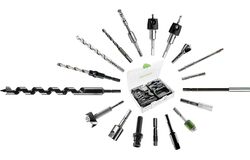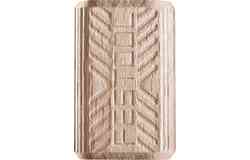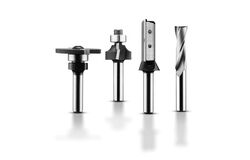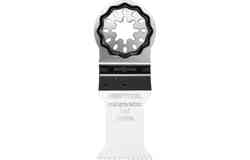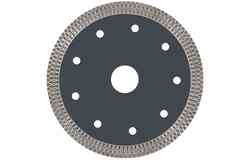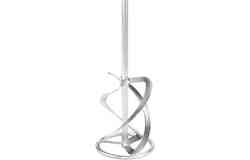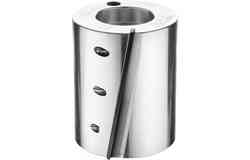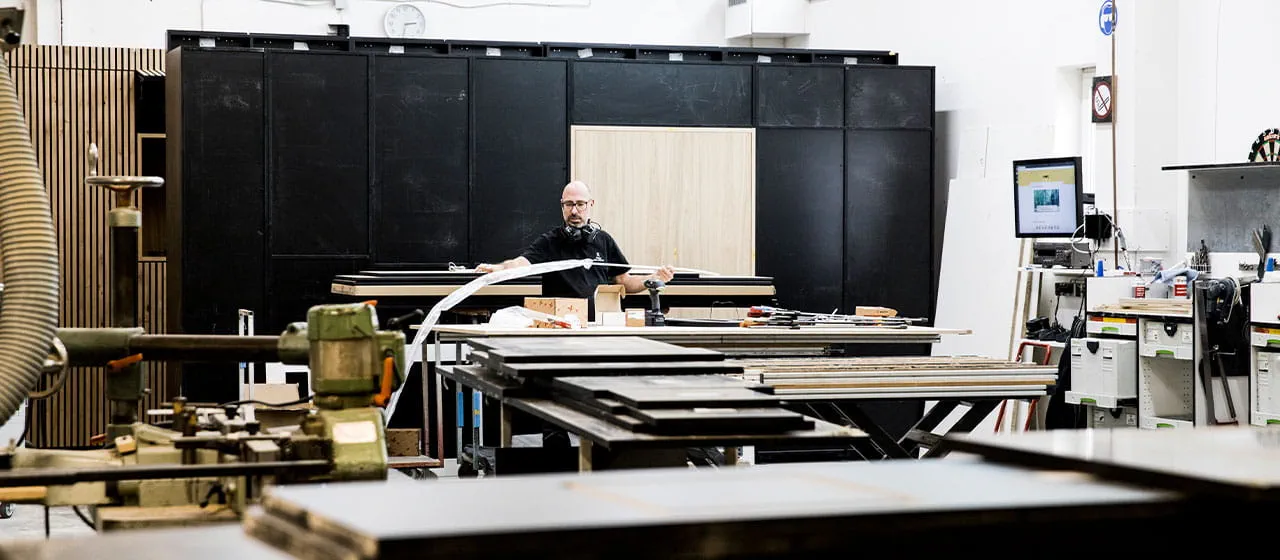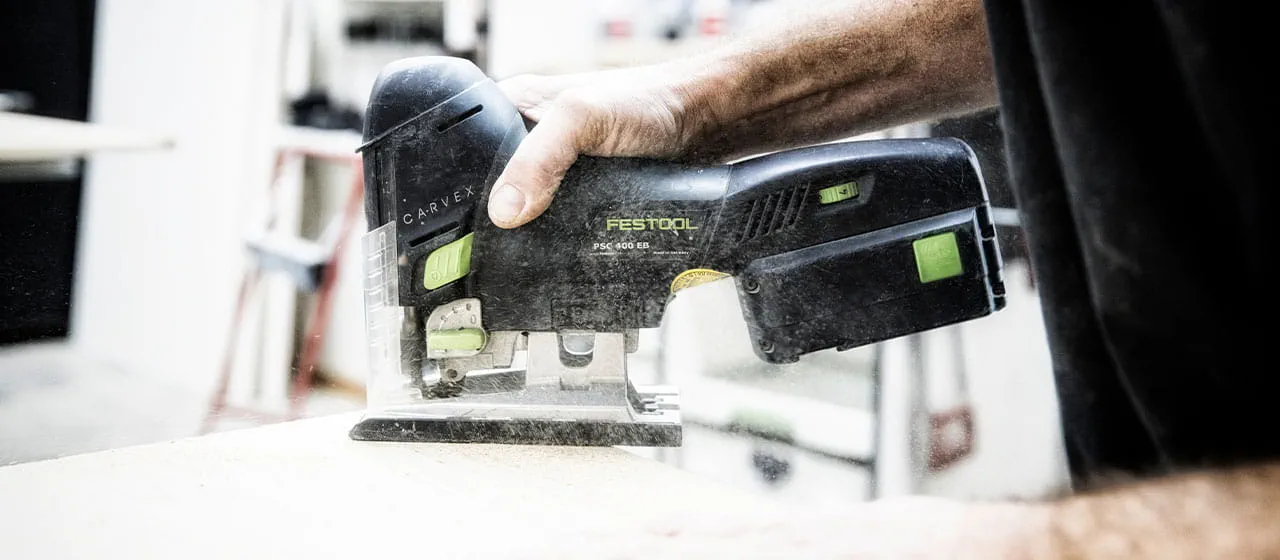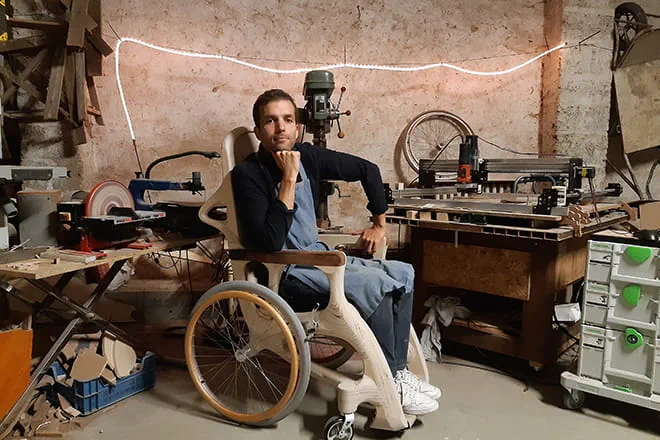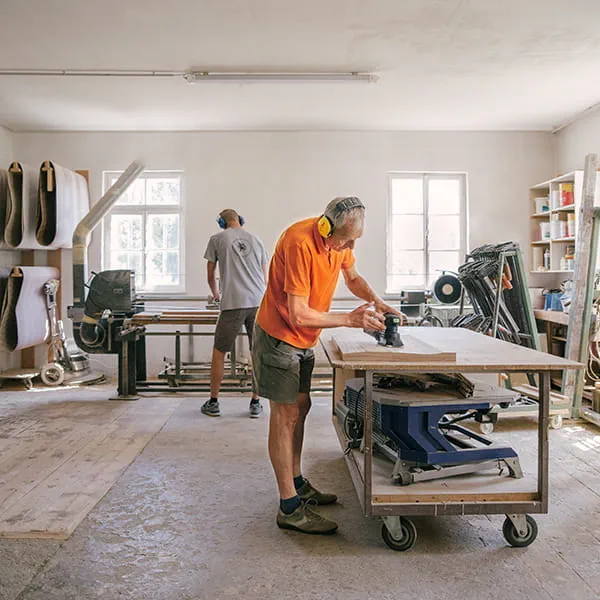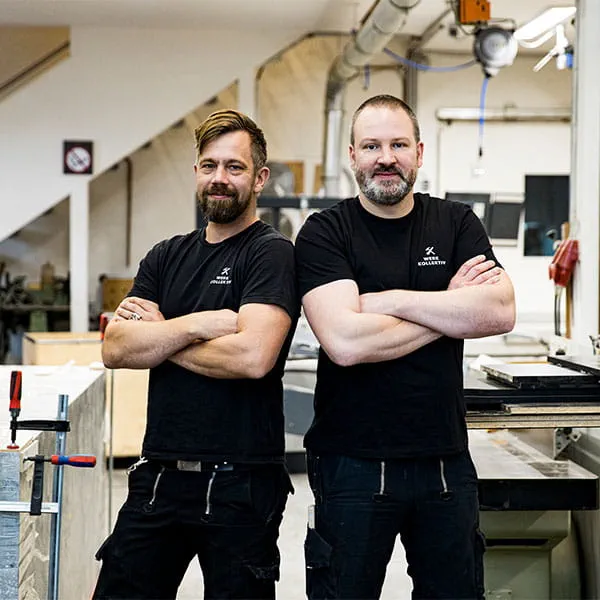
Can't we be a bit more creative?
Visiting a younger generation's joinery.
Craftsmanship collective – a name which has little do with conventions and is associated much more with contemporary creativity. This organisation of Stuttgart-based tradespeople, who are virtually jacks of all trades, brings creativity not only to living spaces, but also to commercial premises, stores and the gastronomy industry. Above all, you can take them at their word when they say they're passionate about craftsmanship.
It's getting a bit tight as the extendible supports of a 40-tonne truck reach far out into the street, virtually preventing anything else from getting through. Fortunately, this road has been closed down this morning because massive components are being unloaded in front of house number eight. However, despite the cargo's very heavy weight, the operator expertly swivels the crane arm over the property boundary and unloads the equipment extremely smoothly. There are tradespeople's vehicles parked around the truck and it's now time for work to start on the construction site. However, one van sticks out – it's a deep black Crafter bearing the name "Werkkollektiv" ("Craftsmanship collective") in large, white letters. It's a name that arouses onlookers' curiosity, just like the typical tradespeople's symbols printed on the bonnet, which are portrayed as simple, contemporary symbols – such as a stylised hammer, pencil, compass and paint brush – and make you think that someone has envisaged a big step into the future of craftsmanship.

Multiple trades under one roof
Flo and Sören have been working in the house since the early hours of the morning. The cupboard – or, to describe it more accurately, the panelling of the entrance area with cupboard elements – needs to be finished. In addition, the base cabinets for the washbasins in the basement need to be fitted. The pair take measurements, make markings, drill holes, align doors with millimetre precision and insert the final shelves. They have both been part of the craftsmanship collective for a number of years – Flo as a master carpenter and Sören as an interior decorator. However, they aren't just key pillars of the organisation but, more importantly, play a key role in the "craftsmanship collective" concept which brings together multiple trades in one organisation and always offers customers solutions and new ideas from a single source.
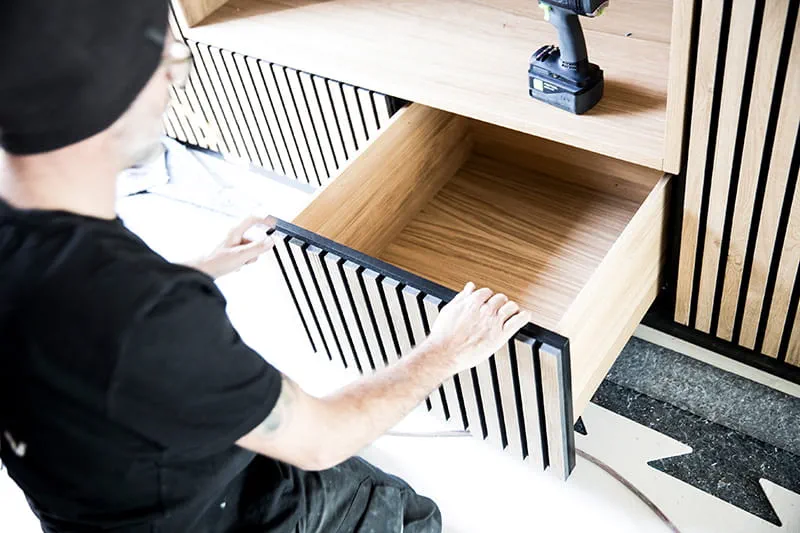

In addition to, Florian "Flo" Widmer and Sören Perenthaler, the collective is made up of Louis Michel (product designer), André Roth and Marius Rehm (jourrneymen carpenters), Max Köhler (industry designer) and the three apprentices. The leading figures in the organisation are Managing Director and locksmith Marco Sebastian and carpenter Christopher Wilkens. Marco and Chris first worked on projects around ten years ago and quickly realised that they could make more out of this partnership. The exact shape of their plans was revealed in 2012, when they founded the "Werkkollektiv" ("Craftsmanship collective").

Passion and sincerity
However, then as now, you can take them at their word when they say they're passionate about craftsmanship. They can think creatively, beyond off-the-peg solutions, in addition to applying conventional solutions, taking you the right approach for you. A lot of heart and soul goes into planning, designing and implementing every project. The fact that such a sincere approach can also be taken by a craftsmanship collective is also demonstrated by a visit to the workshop in the west of Stuttgart.
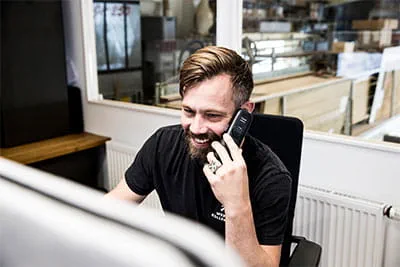
To meet Chris, we need to go up some grating stairs and onto the first floor. As we arrive at the top, he's already waving at us from his workstation. He's in a good mood and explains that he'll soon be free to talk, he just needs to finish something small. No sooner said than done, and within a few minutes he's ready to chat and makes a joke while gazing at the corner of the common area. "The dog basket's empty today," he says. "Amy's working from home." Amy is Flo's dog and she plays just as an important role in the good cooperation at the craftsmanship collective as anything else. Another important factor is the excellent workplace equipment. The team comes up with plans and concepts on the screens on the first floor and these are then passed directly to the machines so that everyone at the craftsmanship collective receives first-hand information and can implement it without delay.
"There's no history here. That's what we're currently building up."
Christopher "Chris" Wilkens, carpenter
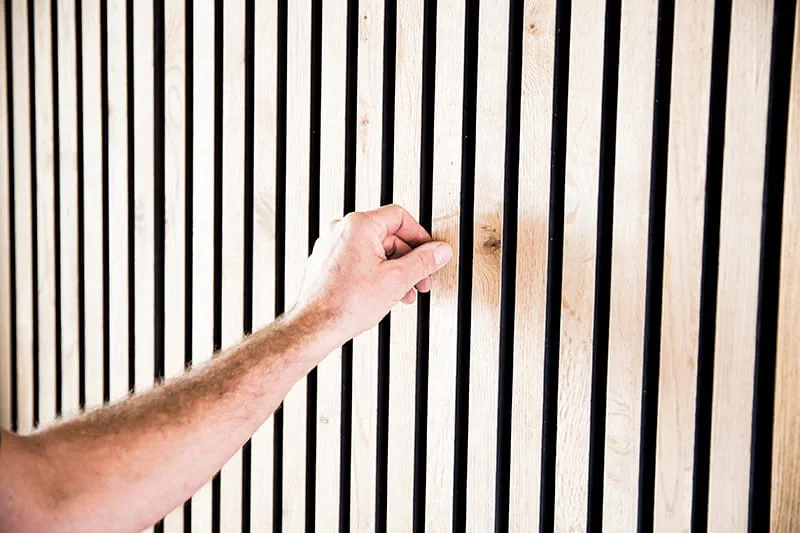
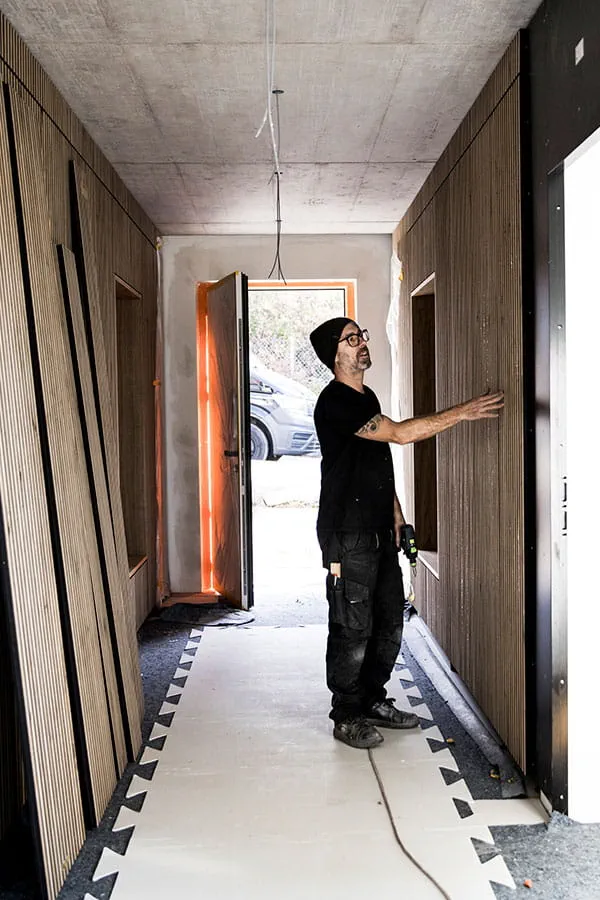
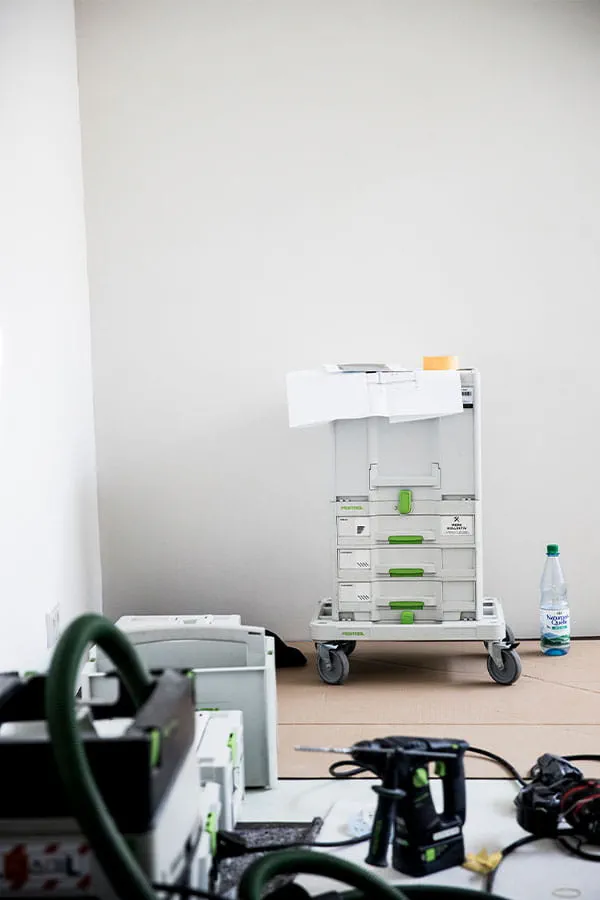
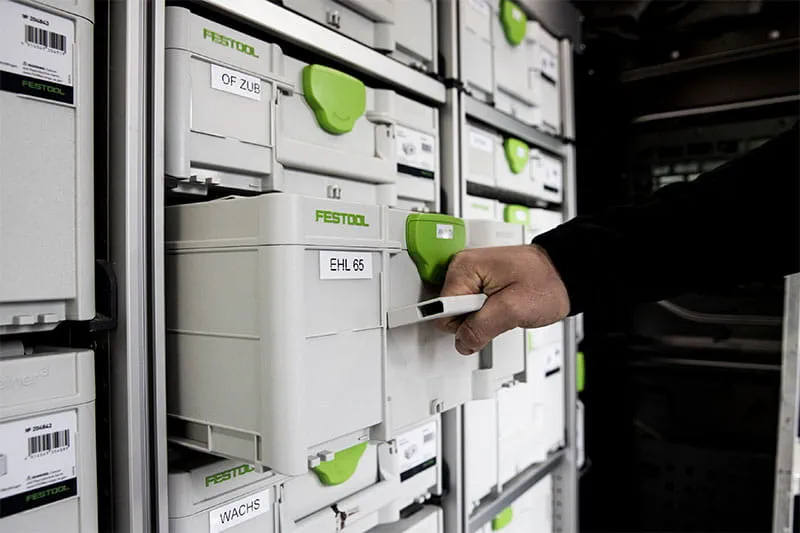
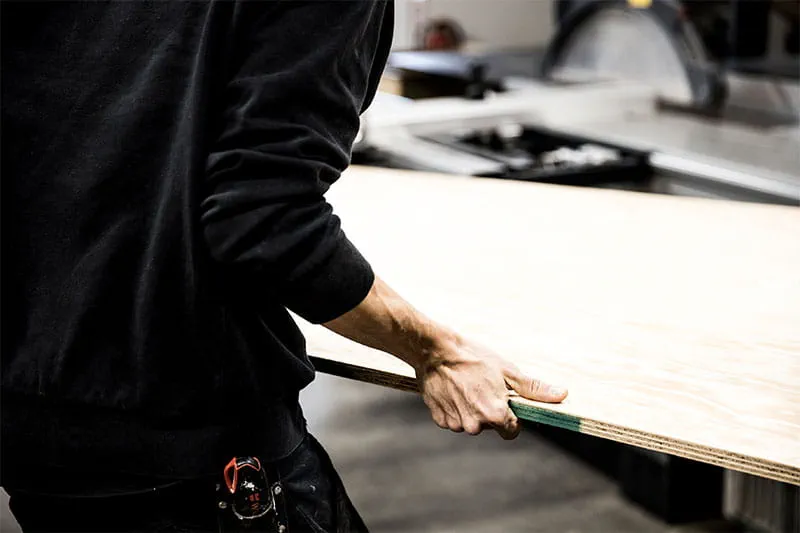
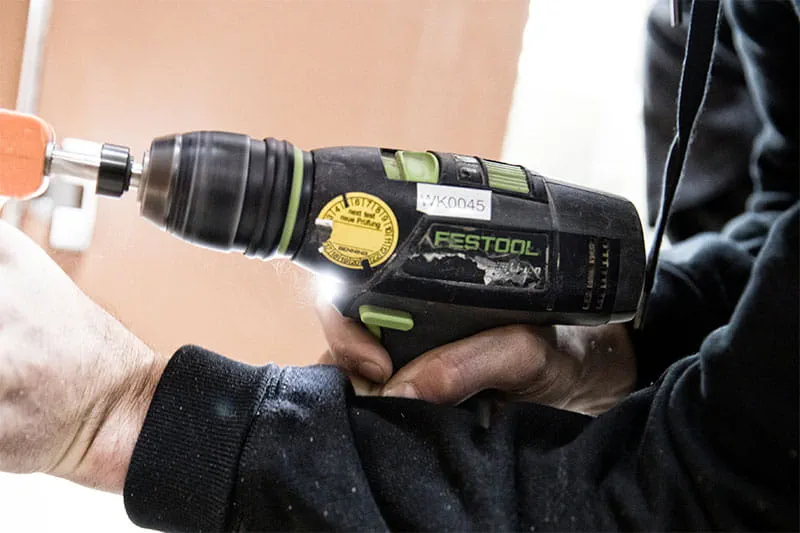

Curiosity towards new approaches and ideas
If that's not enough, the craftsmanship collective also thinks about the future of their trades. It goes without saying that the tradespeople use modern technology, with storage and stock management typically organised using the Festool Order app. This not only makes work easier – above all, it allows time to be creative and to keep up-to-date with technical progress. But that's is only one side of the coin. On the other side is the workers' curiosity. These passionate tradespeople have worked to prove their worth and are just as willing to try new approaches and ideas. This has repeatedly led to Festool including the craftsmanship collective in the development of new products. Chris believes this is very beneficial. This is because "it's fun and broadens our horizons." He adds that he's always pleased to see new machines and to have the opportunity to learn about Festool products at an early stage, to put them through their paces and to make some suggestions for improvements. However, what he likes most about Festool is "the system concept." He explains that the machines and systems are compatible with each other and that their details and feel are right. He has known this ever since his time as a carpentry apprentice. It was therefore clear to him that the craftsmanship collective should also opt for Festool products.

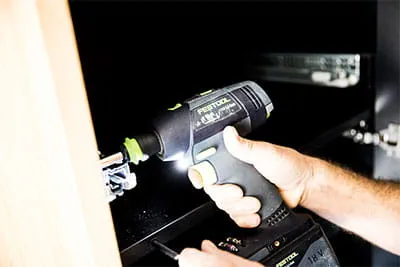
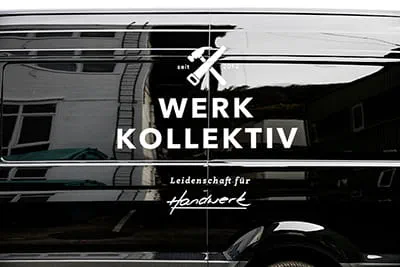
Hallmark of authenticity
"We are the way we are. We're always authentic," Marco tells us, adding that this includes interpreting craftsmanship in contemporary ways. He continues that this is also reflected in the design of the collective's vehicles. It's precisely this approach that has allowed the craftsmanship collective to rapidly develop in recent years. The projects have grown increasingly complex and challenging, meaning that it became inevitable that the organisation would move from the Vaihingen district of Stuttgart to a larger hall in the west of Stuttgart.


Intrepreting craftsmanship in contemporary ways
Marco and Chris believe that the secret to the craftsmanship collective's positive growth not only lies in the good cooperation between its tradespeople, but also in their open communication. This is because "there can be disagreements, and very strong ones at that." Marco adds that growth and development are always marked by disputes – and there's ultimately always added value to realising shared objectives and developing the craftsmanship collective in the long term. He explains that the middle way is always a curve, but the common denominator is always found. Chris also thinks that a craftsmanship collective is a new form of family business. He also believes that the organisation's brief history represents an advantage when it comes to creative thinking and new ideas, adding that "there's no history here. That's what we're currently building up."
